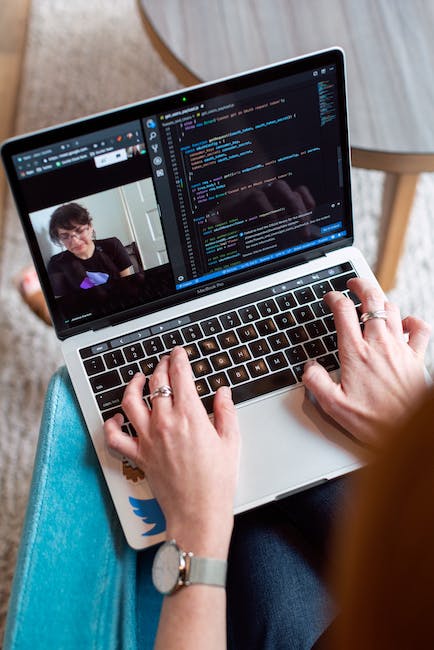Bespoke Video Conferencing Software
What is Video conferencing software?
Custom video conferencing software refers to a type of software that is specifically designed and developed to meet the unique communication needs of a particular organization or company. Unlike off-the-shelf video conferencing software, custom video conferencing software is tailored to align with an organization's specific goals, functionalities, and preferences.Contact us if you are wanting to have a bespoke Video Conferencing application developed?
The uses of custom video conferencing software are vast and diverse. Firstly, it allows organizations to connect with geographically dispersed team members, clients, or partners. With the software's features, video conferencing can be conducted seamlessly, even across large distances. It enables face-to-face communication, collaboration, and presentation of documents, thus eliminating the need for travel, saving resources, and increasing productivity.
Custom video conferencing software also allows for real-time communication with customers or clients, enhancing customer service and increasing satisfaction levels. It can also be integrated with other applications, such as CRM software, to improve data transfer efficiency.
Moreover, security is a major concern when it comes to video conferencing software. By developing a custom video conferencing software, organizations can ensure their data and communications are secure. It can be designed with end-to-end encryption protocols, secure login processes, firewalls, and other security features required by an organization.
Overall, custom video conferencing software provides organizations with a flexible, efficient, and secure way of collaborating remotely, connecting with stakeholders, and enhancing customer service.

What are the main functions of Video conferencing software?
The main modules that comprise video conferencing software typically include:1. Audio and Video Transmission: This module is responsible for transmitting video and audio data between the meeting participants. It uses a combination of coding, decoding, and compression algorithms to ensure that the video and audio data is delivered smoothly and without delay.
2. User Interface: This module is responsible for providing an intuitive and user-friendly interface that makes it easy for meeting participants to join, interact, and collaborate. It typically includes features such as screen sharing, file sharing, chat, and virtual backgrounds.
3. Security and Encryption: This module is responsible for ensuring that the video conferencing session remains secure and free from unauthorized access. It provides end-to-end encryption and authentication mechanisms to protect sensitive data and prevent unauthorized access.
4. Recording and Playback: This module is responsible for recording the video conferencing session and storing it for later playback. It enables participants to review the meeting and refer back to specific points, actions or decisions that were discussed.
5. Integration with Other Applications: This module is responsible for integrating the video conferencing software with other business applications such as customer relationship management, project management, or helpdesk systems. This facilitates seamless collaboration and streamlines workflow.
Overall, video conferencing software provides a fully-featured platform that allows businesses to communicate and collaborate in real-time, irrespective of geographical location. It provides a cost-effective, secure, and convenient way of conducting meetings, improving productivity, and enhancing team collaboration.
Data / systems integration
Video conferencing software is often integrated with various types of systems, including customer relationship management (CRM) and enterprise resource planning (ERP) systems. These integrations are typically made possible through the use of APIs or other tools that allow for seamless communication between different software platforms.One of the main considerations when integrating video conferencing software with other systems is compatibility. It's important to ensure that the video conferencing software is compatible with the other software being used, as well as any hardware that may be involved in the integration. Additionally, it's essential to consider security and data privacy measures to ensure that sensitive information is not compromised during the integration process.
Another important consideration when integrating video conferencing software with other systems is scalability. As businesses grow and change, their technology needs may also evolve, so it's important to choose a software solution that can easily adapt to these changing needs. This may involve using APIs or other tools that are designed to facilitate scalable integrations.
Overall, integrating video conferencing software with other systems can be a complex process that requires careful planning and consideration. However, when done correctly, it can provide a powerful tool for increasing efficiency, improving communication, and enhancing overall business productivity.
Who uses Video conferencing software?
Organizations of all types, sizes and market verticals can benefit from video conferencing software. Small businesses and startups can use it to conduct meetings with remote employees and contractors, while large multinationals can use it to connect teams across different time zones and locations. Video conferencing software is also popular in the education sector, where it is used for remote learning and virtual classrooms. Healthcare organizations, government agencies and non-profit organizations also use video conferencing software to connect with patients, constituents and donors. In short, any organization that needs to connect remotely with employees, clients, partners or stakeholders can benefit from the use of video conferencing software.
Benefits of Video conferencing software
Organisations use video conferencing software for a variety of reasons, but the key benefits are clear. Video conferencing allows people from different locations to connect in real-time and have face-to-face conversations, as if they were in the same room. This makes it an ideal communication tool for businesses with remote workers, international teams or clients, or for meetings that require travel.One of the biggest benefits of video conferencing software is that it saves time and money. Many businesses spend a significant amount of time and expense on travel for meetings, but with video conferencing, they can eliminate the need for travel altogether. This not only saves money on transportation and accommodation but also on the time spent traveling, which can be used more productively.
Another benefit of video conferencing software is that it improves team collaboration and communication. By allowing teams to communicate in real-time, they can more efficiently discuss and work on projects, regardless of their location. Additionally, video conferencing can help teams build stronger relationships and create a better sense of camaraderie, which can lead to improved productivity and increased job satisfaction.
Desktop video conferencing software is becoming increasingly popular, as it enables employees to use video conferencing on their own devices from anywhere with an internet connection. This level of flexibility makes it easier to hold impromptu meetings or have quick catch-ups with colleagues.
Overall, video conferencing software is a valuable tool for businesses of all sizes and industries. It allows for increased collaboration, saves time and money, and can improve team communication and relationships. By investing in custom video conferencing software, businesses can tailor the technology to their specific needs and create an even more efficient communication system.
Some of the players in the Video conferencing software market
Some of the main brands of video conferencing software include Zoom, Skype, Google Meet, GoToMeeting, and WebEx.Zoom is considered one of the best video conferencing software due to its user-friendly interface, reliable performance and a large capacity for hosting virtual meetings. However, some users have complained about privacy concerns, security issues and occasional software glitches.
Skype is another popular video conferencing software that offers a seamless communication experience, including voice calls and messaging. However, it is not ideal for conferences involving large numbers of participants, and may suffer from poor call quality in low-bandwidth situations.
Google Meet is a cloud-based video conferencing software that is integrated with Google Workspace, making it an ideal choice for businesses already using Google's suite of productivity tools. However, it lacks some of the advanced features that other video conferencing tools offer and has a few bugs that need fixing.
GoToMeeting is a feature-packed video conferencing software that allows users to host virtual meetings with up to 3,000 participants. Its key benefits include reliability, advanced collaboration options, and breakout sessions capabilities. However, the app can be a bit cumbersome to set up and use for some users, and there are occasional internet connectivity issues.
WebEx is another well-regarded video conferencing software that boasts top-level security features, real-time transcription, and translation. Despite these benefits, the platform is known to have a steep learning curve and can be difficult to integrate with other tools.
Overall, each video conferencing software has its own strengths and weaknesses. It is crucial that business owners conduct thorough research and carefully evaluate each option before making a decision.
Benefits of off-the-shelf Video conferencing software
Off-the-shelf video conferencing software comes with a range of benefits including cost-effectiveness, ease of use, and access to a wealth of features. With an off-the-shelf solution, businesses can quickly get up and running with video conferencing without having to invest significant resources in custom development. Additionally, off-the-shelf solutions are typically user-friendly, requiring little technical expertise to set up or use. Finally, these software packages often come with a variety of features such as screen sharing, recording, and virtual backgrounds that can enhance the video conferencing experience for users.Limitations of off-the-shelf Video conferencing software
Off-the-shelf video conferencing software may appear to be the most convenient solution for businesses looking to hold remote video meetings, but there are several limitations that can be a hindrance to their effective use. Firstly, these software packages are generally designed with a 'one size fits all' approach, thus lacking the flexibility to customize features to suit specific business needs. This is where bespoke software development comes into play.Another limitation of off-the-shelf video conferencing software is the inability to manage large groups effectively. The larger the group, the more likely it is that issues such as muted sound or lagging video will occur. Custom-made video conferencing software with specific technical requirements can ensure that such issues are at a minimum.
The quality of video and audio often faces limitations due to internet connectivity issues. Low-quality internet connectivity and issues with bandwidth can impede clear picture and sound quality. With off-the-shelf video conferencing software, these issues cannot be resolved since the software is not designed to work with specific telecommunications regulations and quality thresholds.
Custom video conferencing software can provide a solution to these limitations by enabling real-time technical support, upgraded functionality, and adaptability options. Companies can be confident that their communication system is tailored to their business needs and is scalable as their needs grow.
Additionally, off-the-shelf video conferencing software is often flawed when it comes to ensuring data privacy and security, which could also put valuable company information at risk. Custom video conferencing software's security can be customized and tailored according to a client's business needs, ensuring that confidential communication remains confidential.
In conclusion, off-the-shelf video conferencing software has its limitations when compared to personalized software. Custom video conferencing software provides business owners with specialized solutions that meet their specific needs and offers better-quality communication, scalability, and security.
Is bespoke Video conferencing software a viable option?
Bespoke or partially bespoke video conferencing software can offer numerous benefits for businesses of all sizes. Firstly, a custom solution can provide a tailored experience that satisfies the unique requirements of the business. This means that the software can be designed to seamlessly integrate with existing systems and deliver a personalized video conferencing experience that meets the specific needs of the business.Additionally, bespoke video conferencing software can be more user-friendly than out-of-the-box solutions. This is because the software can be optimized to meet the preferences of the business and the end-users. As a result, it can be easier to use and more intuitive, leading to increased user acceptance and engagement.
Custom video conferencing software can also enable businesses to add features that they need specifically. For instance, some companies may require highly secure video conferencing software that is designed to protect confidential information. In such a case, a bespoke solution can be developed to meet these exact requirements rather than forcing the business to compromise on security by using a generic solution.
Some successful use cases of bespoke video conferencing software include remote working and collaboration, online training, and virtual meetings with customers and stakeholders. For example, a company may develop a custom video conferencing software to facilitate remote working during the COVID-19 pandemic. This custom solution could be designed to support multiple users, integrate with other software, and offer highly secure communication.
In conclusion, bespoke video conferencing software can offer numerous benefits for businesses. These benefits include tailoring the software to meet specific requirements, increased user-friendliness, and the ability to integrate customized features. As businesses continue to embrace remote working and online communication, bespoke video conferencing software will become even more important.

Fun facts about Video conferencing software
Video conferencing software has seen a surge in demand in recent years, with the market expected to reach over $9 billion by 2026.The COVID-19 pandemic has only accelerated this growth, with companies and individuals looking for ways to stay connected while working remotely.
Desktop video conferencing software is becoming increasingly popular, allowing workers to communicate from the convenience of their own computer.
The best video conferencing software offers a wide array of features, such as screen sharing, recording options, and virtual backgrounds.
While software video conferencing has many benefits, it's important to ensure that the software is secure and reliable. There have been instances of video conferencing hacks, so it's crucial to choose a reputable provider.
A custom video conferencing software can be tailored to meet the specific needs of a business or organization, providing a more seamless and efficient communication tool.
As technology continues to advance, we can expect to see even more innovative features in video conferencing software, such as augmented reality and virtual reality.
Video conferencing software FAQ
1. What are the benefits of having a custom video conferencing software developed for my business?Custom video conferencing software can provide a number of benefits for your business, including:
- Improved collaboration: Having a custom video conferencing software that is tailored to your business needs can help to improve collaboration and communication among your employees. This can lead to more efficient workflows and better decision-making.
- Better security: Custom video conferencing software can be designed with added security features to protect your sensitive data and communications.
- More flexibility: You can choose which features you need in your custom video conferencing software, allowing you to tailor it to your specific business needs.
- Enhanced branding: You can include your business branding in your custom video conferencing software, which can help to improve brand recognition and visibility.
2. Will a custom video conferencing software be compatible with my current technology stack?
A good software development company will work with your current technology stack and ensure that your custom video conferencing software is compatible with your existing systems. However, it's important to provide your software development team with as much information as possible about your current technology stack to ensure a smooth integration.
3. What features can be included in a custom video conferencing software?
A wide range of features can be included in a custom video conferencing software, including:
- Video and audio conferencing
- Screen sharing
- Chat functionality
- Whiteboarding
- Recording and playback
- Virtual background
- Polls and surveys
- Breakout rooms
4. How long does it take to develop a custom video conferencing software?
The development timeline for a custom video conferencing software can vary depending on the complexity of the features and the size of the development team. However, a good software development company should be able to provide you with an estimated timeline based on your specific requirements.
5. Can a custom video conferencing software be developed for mobile devices?
Yes, a custom video conferencing software can be developed for mobile devices, including smartphones and tablets. This can enable your employees and clients to participate in video conferences from anywhere, at any time.
6. How much does it cost to develop a custom video conferencing software?
The cost of developing a custom video conferencing software can vary depending on a number of factors, including the complexity of the features, the size of the development team, and the length of the development timeline. However, a good software development company should be able to provide you with a detailed quote based on your specific requirements.
7. How do I ensure that my custom video conferencing software is user-friendly?
A good software development company will conduct user testing throughout the development process to ensure that your custom video conferencing software is user-friendly and meets your business needs. Additionally, you can provide feedback and make suggestions to the development team to ensure that the software is tailored to your specific requirements.
Next Steps?
Are you tired of dealing with the limitations and frustrations of off-the-shelf video conferencing software? Do you want a custom solution that meets the specific needs of your business? Look no further than our bespoke software development services.Our team of experts has a wealth of knowledge and experience in video conferencing software, and we can create a solution that is tailored to your unique requirements. Whether you need desktop video conferencing software, software video conferencing, or any other video conferencing software, we can deliver a product that exceeds your expectations.
In addition to developing custom video conferencing software, we also offer systems integration and data migration services. If you need to migrate your data from an old system or integrate new software with existing systems, we can make the process seamless and hassle-free.
Don't settle for off-the-shelf software that doesn't meet your needs. Contact us today to learn more about our bespoke software development services and how we can help you take your business to the next level.
Read more about the main software category Communication Applications.
Other services in Communication Applications category:
Want a quick quote for the development of custom Video Conferencing Application?
Contact us to discuss your questions about bespoke Video Conferencing Applications.
